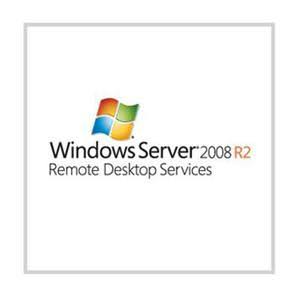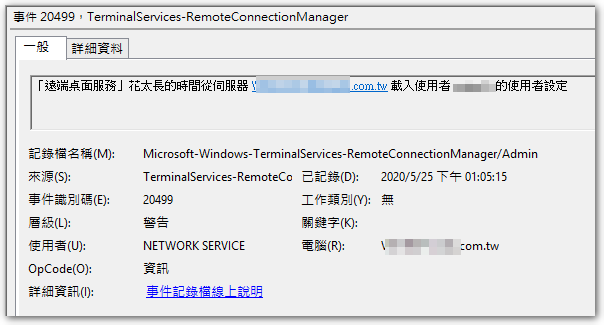After you upgrade a Microsoft Windows NT domain to Windows 2000 or Windows Server 2003, Windows 2000 Terminal Services clients may be repeatedly denied access to the terminal server. If you are using a Terminal Services client to log on to the terminal server, you may receive one of the following error messages: Because of a security error, the. We have a Server 2012 R2 terminal server farm and we're experiencing random disconnections. Of course, we have a huge number of variables and we're trying to track down each possibility. In the Microsoft-Windows. From Wikipedia, the free encyclopedia Remote Desktop Services (RDS), known as Terminal Services in Windows Server 2008 and earlier, is one of the components of Microsoft Windows that allow a user to take control of a remote computer or virtual machine over a network connection.
- Windows Terminal is a new, modern, feature-rich, productive terminal application for command-line users. It includes many of the features most frequently requested by the Windows command-line community including support for tabs, rich text, globalization, configurability, theming & styling, and more.
- You can install Windows Terminal from the Microsoft Store. If you don't have access to the Microsoft Store, the builds are published on the GitHub releases page. If you install from GitHub, the terminal will not automatically update with new versions.
Installation
You can install Windows Terminal from the Microsoft Store.
If you don't have access to the Microsoft Store, the builds are published on the GitHub releases page. If you install from GitHub, the terminal will not automatically update with new versions.

First run
After installation, when you open the terminal, it will start with PowerShell as the default profile in the open tab.
Dynamic profiles
The terminal will automatically create profiles for you if you have WSL distros or multiple versions of PowerShell installed. Learn more about dynamic profiles on the Dynamic profiles page.
Open a new tab
You can open a new tab of the default profile by pressing Ctrl+Shift+T or by selecting the + (plus) button. To open a different profile, select the ˅ (arrow) next to the + button to open the dropdown menu. From there, you can select which profile to open.
Invoke the command palette
You can invoke most features of Windows Terminal through the command palette. The default key combination to invoke it is Ctrl+Shift+P.
Open a new pane
You can run multiple shells side-by-side using panes. To open a pane, you can use Alt+Shift++ for a vertical pane or Alt+Shift+- for a horizontal one. You can also use Alt+Shift+D to open a duplicate pane of your focused profile. Learn more about panes on the Panes page.
Configuration
To customize the settings of your Windows Terminal, select Settings in the dropdown menu. This will open the settings.json file in your default text editor. (The default text editor is defined in your Windows settings.)
The terminal supports customization of global properties that affect the whole application, profile properties that affect the settings of each profile, and actions that allow you to interact with the terminal using your keyboard or the command palette.
Tip

You can also use the settings UI to configure your settings if you are using Windows Terminal Preview. You can learn how to open the settings UI on the Actions page.
Command line arguments
You can launch the terminal in a specific configuration using command line arguments. These arguments let you open the terminal with specific tabs and panes with custom profile settings. Learn more about command line arguments on the Command line arguments page.
Troubleshooting
If you encounter any difficulties using the terminal, reference the Troubleshooting page. If you find any bugs or have a feature request, you can select the feedback link in the About menu of the terminal to go to the GitHub page where you can file a new issue.
Microsoft Windows Terminal Server is a core component of Windows Desktop products and Microsoft Windows Server that allows remote computers to connect to a Windows operating system computer using a remote terminal session. With the remote terminal session, remote computers can run applications on the remote machine and run multiple remote connections independently of each other.
Microsoft introduced this concept by releasing terminal services as a part of the Windows Server operating system. Terminal services have been an integral part of Windows Server OS editions beginning with Windows NT 4.0. With the release of Windows Server 2008 R2, terminal services were renamed remote desktop services (RDS). Before implementing this technology, it is essential to know what a terminal server is and why you should use one.
Why use a terminal server?
Terminal servers enable businesses to centrally host applications and resources and publish them to remote client devices, regardless of the location and platform of the end-user device. A terminal server provides multiple benefits. First, terminal servers provide end-users with access to company resources from anywhere and from any device. Second, they facilitate a single point of maintenance and allow you to monitor the infrastructure from a central dashboard. Third, applications are installed once and regularly updated on the server, so there is no need to install or update a program on each machine in the network. In addition, with concurrent licenses instead of per-device ones, businesses can reduce licensing costs, and thin clients allow businesses to optimize costs and power savings for a better ROI. Moreover, the lifespan of desktop hardware extends is extended, and network security is significantly improved.
What is terminal server architecture?
It is also important to understand the terminal server architecture. The terminal server architecture consists of three crucial components:
- A multi-core server where resources are centrally hosted.
- A remote desktop protocol that enables data transmission between the server and the client.
- A client software on each remote client device. This client program allows the device to connect to the server via the RDP protocol.
In addition, there is the Terminal Services Licensing Service, which provides the server with the TS CAL licenses for devices to connect to it. The sessions list is saved in the Sessions Directory Service. This list is indexed by username, allowing the user to reconnect to the same server.

Microsoft Terminal Services Windows 10
What is terminal server licensing?
Each user/device connecting to the TS server should have an RDS CAL. The terminal server licensing role is installed on an RDS license server. The role of this TS licensing server is to store and track all RDS CALs installed for a group of servers. A single licensing server can serve multiple TS servers. The license server should be activated to provide permanent RDS CALs; otherwise, it issues temporary RDS CALs. It is important to know what terminal server licensing is to estimate costs.
To deliver virtual desktops and applications to remote users, terminal services uses the RDP protocol. It works on TCP/IP and listens on port 3389. The RDP protocol was improved to provide a rich graphical experience to end-users. The new version, RemoteFX, was introduced in Windows Server 2008 R2 SP1. Using RemoteFX technology, businesses can seamlessly deliver graphic-intensive applications such as AutoCAD and the Adobe Suite to remote client devices.
Terminal services use case
Let’s say, for instance, that a company has a geographically dispersed network of 1,000 users connected over WAN. The company develops a new application which is to be used by all employees. The application is not web-based, and employees work from different locations. The company has to provide access to that application for every user/device. Terminal services are an excellent solution to this issue. With one server, a TS server OS license, TS licensing server, and RDS CALs for each user/device, you can set up a terminal service environment to centrally host applications and deliver them to remote client devices with ease.
Parallels Remote Application Server brings the best of a terminal server
Many businesses still use a Windows OS, but there are several challenges associated with the terminal server setup. While the complexity of installing and configuring multiple components is the primary challenge, the cost of RDS CALs is another burden. Secondly, a TS environment only supports Windows and Mac environments. Parallels Remote Application Server allows you to use the TS environment while eliminating its limitations. Parallels Remote Application Server is easy to install and manage. By using a simple wizard, you can set up the tool in five minutes. Secondly, all the virtualization components come auto-configured out of the box. Another important advantage of Parallels Remote Application Server is the support of a range of client devices, including iOS, Android, and Chromebooks. Most importantly, Parallels Remote Application Server is cost-effective.
References
terminal server | http://searchvirtualdesktop.techtarget.com/definition/terminal-server
How Terminal Services Works | https://technet.microsoft.com/en-us/library/cc755399(v=ws.10).aspx
How Terminal Server Works | http://www.brianmadden.com/blogs/terminal_services_for_microsoft_windows_server_2003_advanced_technical_design_guide/pages/how-terminal-server-works.aspx
Microsoft Windows Terminal Services Wikipedia
The 12 Advantages of Terminal Services | http://www.emazzanti.net/the-12-advantages-of-terminal-services/
Microsoft Windows Terminal Services Send Ctrl Alt Del
10 reasons why Windows Terminal Services is becoming more popular | http://www.techrepublic.com/blog/10-things/10-reasons-why-windows-terminal-services-is-becoming-more-popular/

 -->
-->